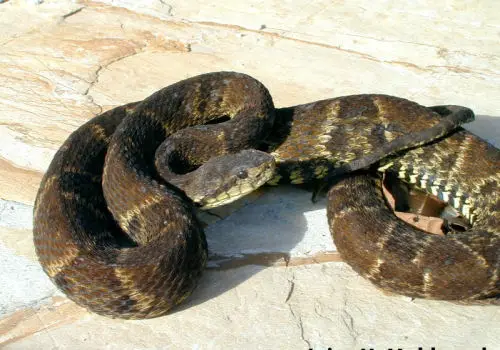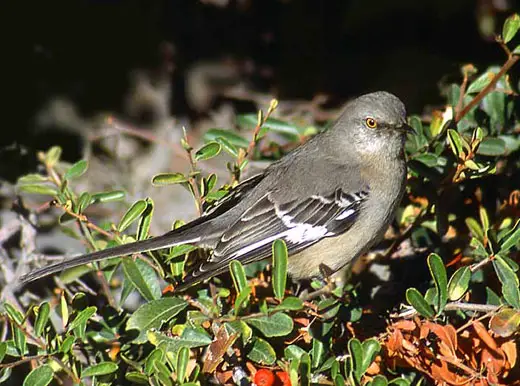Common Lancehead
Common Lancehead is considered to be the most dangerous snake of Central and South America. They’re accounted for more human deaths than any other snake in the region. Once, two people died from a single bite of the Lancehead – a plantation worker was bit, and his wife tried to was the scar, but the wife had many small wounds on her hands from gathering coconuts, and in result they both died in the next 48 hours.
The Lancehead is a solitary animal that reaches a length of more than 2,4 metres. These snakes live in the tropical jungles of Central and South Africa. Their natural habitat often crosses over with coffee and banana plantations and the bites of these snakes kill multiple people every year. It is almost impossible for a human to avoid the snake’s attack, as the lightning speed at which the animal attacks cannot be countered.
These reptiles live on the ground, usually near river shores. They are quite active, and unlike many other snakes, they feed mostly on small prey, thus they have to spend much time feeding. The Common Lancehead can’t see very well in the dark, but special thermoreceptors are in place to sense heat, and the snake can register temperature changes that are as little as 0,003 Celsius. That’s why, even in the dark, the snake’s attack is swift and precise.
Common Lancehead is active mostly during the night, although they can hunt at any time of the day. The snake feeds mostly on rodents and other small mammals. The victim is killed by a deadly injection of the venom. Each snake holds an average of 150 mg of venom at a time, while the deadly dose for a human-sized creature is 50 mg. This, combined with the fact that the snake eats mostly small prey, means that it spends very much time hunting and catches multiple animals per day.
These snakes abandon can mate all year round. After a successful copulation, the eggs start developing inside the mother’s body and she makes sure the eggs have the necessary temperature by warming the belly up in the sun or cooling it off in the shadow. Three to four months later, 50-70 live snakes are born, each of which are about 30 cm long. They immediately start independent lives.
Being so dangerous, this snake is forcefully eradicated by most plantation owners and the Common Lancehead is definitely an unwelcome guest in any human populated territory. Despite the actions taken against them, they hold a strong population, thanks to the steady rate of reproduction and they are currently not endangered.




